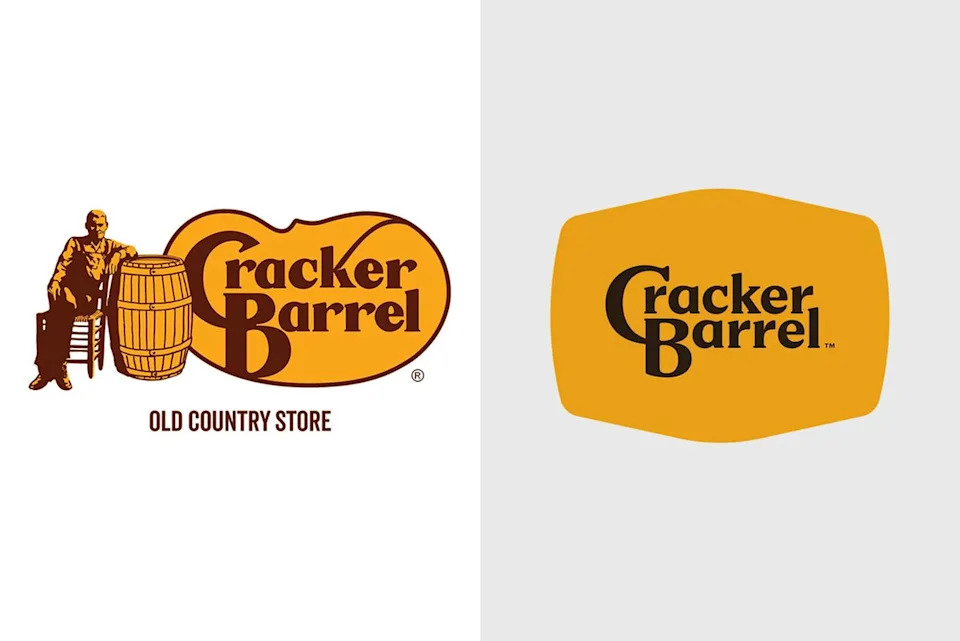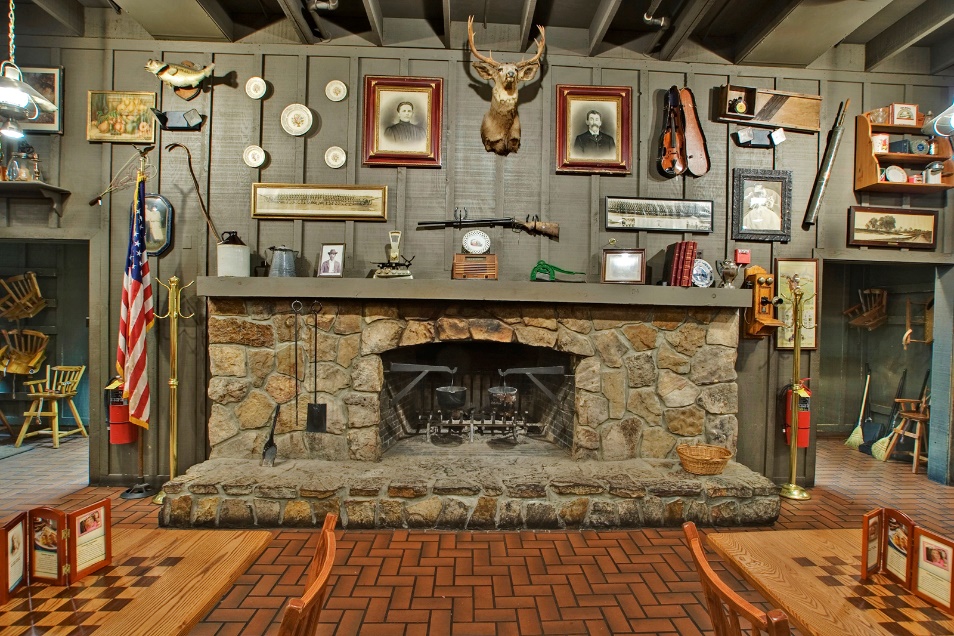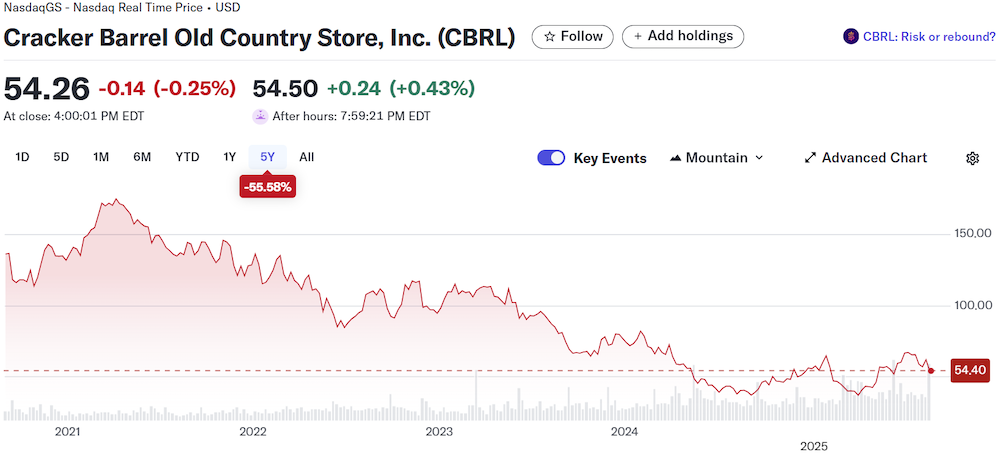Recently, I was traveling but not on one of my typical visits to a mine, or to an exploration or development project, nor to an investment conference. Instead, I gathered first-hand information about how an iconic American company can drive itself into a ditch, figuratively speaking. And I’ll address this in just a moment.
But first, some backstory…

Panorama of returning 1st Brigade, 10th Mountain Division. BWK photo.
Welcome Home… to Fort Drum
Last week, my wife and I drove from Western Pennsylvania to Watertown, New York, a small, upstate city located at the northeast tip of Lake Ontario, adjacent to the St. Lawrence River. The region is historic in many ways, among which that it was a strategic point between the U.S. and British Canada during the War of 1812. Plus, Watertown is an old American mill- and factory-town that did well in the 19th and early 20th centuries. On this alone, the place offers lessons about the rise and fall of fortunes over time.
Meanwhile, Watertown is adjacent to a large Army base called Fort Drum, and that’s the real reason why I mention it. Because my wife and I went up there for the return of one particular element of the 1st Brigade, 10th Mountain Division, from a ten-month deployment to Iraq.
Among those 319 American Soldiers pictured above is our son… Who deplaned from a military-chartered airliner at nearby Fort Drum/Wheeler-Sack Army Airfield, turned in his weapon and classified gear, and then marched in formation over to the base gymnasium for a “Welcome Home” ceremony.
Yes, “Whew!” – and you surely know this if you have a child or other loved one in military service. Your bandwidth of life narrows considerably when someone special heads overseas. And it’s a very good day when they get back.
Okay yes, I know… “America is not at war,” or so they tell us. Although currently, something like 50,000 U.S. service members are scattered across just the Middle East, onshore and offshore. And obviously, that region is problematic such that almost all deployed personnel are eligible for tax-exempt status because they’re in what’s called “imminent danger,” complete with combat and/or hazardous duty pay.
But enough about that… I mention my road trip because it offered the opportunity to stop along the way to conduct a first-hand investigation of an evolving business debacle, namely the so-called “rebrand” of a restaurant chain called Cracker Barrel.
They Lost the Cracker and the Barrel
Yes, let’s discuss the Cracker Barrel Old Country Store, Inc. (CBRL), dba “Cracker Barrel.” It’s a well-known purveyor of Southern-themed food, founded in 1969 in Tennessee. Now it’s a publicly traded, multi-billion-dollar company with about 660 sites in 45 states, and whose orange and brown signs appear along interstate highways across the land.

Cracker Barrel public image, before/after. Courtesy Cracker Barrel ™.
Perhaps you’ve followed this tale of roadside vandalism. And I get it if you have not because, after all, any move in Cracker Barrel doesn’t affect the share price of Nvidia or reflect on the wild overvaluation of the artificial intelligence bubble. Nor do the tribulations of this restaurant chain move the price of gold or oil, or reflect how tariffs distort the foundations of long-term U.S. alliances across the globe.
But the Cracker Barrel story does offer another of those “what the heck”-moments, when you shake your head and wonder about the collective competency/incompetency of America’s managerial class. Because something is very wrong with the suits in the company C-suite.
As the image above reflects, Cracker Barrel management changed the logo to eliminate both the barrel, and also the old guy who leans up against it (aka the “cracker,” according to some wags). Now, the front-facing, public signage of this outfit is a sterile, boring, meaningless, orange and brown nothing-burger.
Plus, the company has another expensive, corporate-level program in play, to deconstruct its iconic store innards. The plan is to remove all the curiosities, kitsch, throwback items, framed whatevers, and general bric-a-brac that has long hung on the restaurant walls, and which has established the general Cracker Barrel look, feel, tone and brand.

Bunches of stuff hanging on Cracker Barrel walls. Courtesy OCRegister.com.
The replacement interior scheme will be whitish-painted walls, with some sort of as-yet unclear, geometric-looking artwork. But definitely, it will be a remarkable visual contrast to anyone familiar with the way things used to be. Or in other words, management is rebranding the restaurant chain from the outside in, and inside out.
The company’s eventual goal is dramatically to tone down the external look of its buildings, as well as interior wall and floor space. It will lose the “Southern” ambience that has long resembled a 1940s-era country general store, if not the set of the old television show Hee-Haw.
Also, the company will transition from its hallmark wooden chairs and tables to a more plastic-looking appearance, with composite material tabletops. Because everyone loves eating off plastic tabletops, right?
I could go on with other changes in the pipeline, but you get the idea. And clearly, the business conclusion is that Cracker Barrel is not rebranding, it’s de-branding. That is, the company wants to shun many of the core trademark and copyright features that made it a multi-billion-dollar national chain in the first place.
But all of this is to what purpose, one wonders. What is management thinking? Is it to rid the restaurants of Southern-ness? That’s an odd goal because Cracker Barrel has long presented itself as a Southern-themed dining establishment, down to the grits, gravy and biscuits. And it’s not as if the chain can somehow morph into a Mexican theme, with a new name like “Barril de Galletas.”
And what of the demographics, one wonders? Does management think that the current customer base is too… what, pray tell? Too old? Too many Boomers? Too white? If so, I’m curious about how the company keeps statistics like those. Anecdotally, over many years of stopping into Cracker Barrel sites across the U.S., I’ve seen a lot of everything and everybody.
Meanwhile, the idea of “too old, too Boomer, too white” is an offputting message to send to the public, let alone to rub it in the face of the actual customer base that is older, Boomer and white. Indeed, essentially all of Cracker Barrel’s customers drive to the restaurants, and they can just as easily drive straight past to a different restaurant down the road.
Okay, I understand the part about how management may be trying to grow the chain’s customer base by reaching out to new categories of people. But wow, it’s an odd game plan to tell the current customers – and really, that’s exactly what’s happening here – that they and their values and comfort level are not what you want to serve anymore.
We’ll see how things develop, but right now it sure looks like management wants to wreck the company. Or to use an Army analogy, they’re foolishly calling in artillery on their own position.
Times Are Tough for Everyone
Of course, Cracker Barrel’s problems didn’t just recently materialize. Like restaurants everywhere, Cracker Barrel has confronted challenges in the post-pandemic economy. It’s a long list of industry-wide problems that range from hiring and keeping a stable workforce, to severe inflation in the costs of food, utilities, taxes and more.

Five-year chart of Cracker Barrel shares. Finance.Yahoo.Com.
And with these last points in mind, it’s no surprise that Cracker Barrel’s share price has declined for four years. So yes, times are tough; but wow, this latest act of corporate decision-making has instantly alienated many core customers. It’s just another example of bad management focusing on silly gimmicks and burning the pancakes, so to speak.
I’m a geologist, not a restaurant manager. But as someone who travels a lot for work, and who has been patronizing their establishments for 30-plus years, I can tell Cracker Barrel exactly what I want to see: a clean restaurant and restrooms; good quality food at reasonable prices; and polite, professional service.
And okay, yes; I also get a kick out of all the stuff hanging on the walls. It’s fun. Oh, and I enjoy people-watching in Cracker Barrel venues because the place attracts a true cross-section of working- and middle-class America.
Don’t Fix What’s Not Broken
Another angle on this Cracker Barrel mess is that the company’s management team seems to want to “fix” something that is not, deep down, really broken. As discussed above, there was nothing truly wrong with the well-established Southern theme and/or kitsch. The restaurant chain’s real problems are far more traceable to fundamental issues like cleanliness, food quality, pricing, and customer interaction with staff.
But fixing the basics just isn’t good enough for some people. They must Go Big, so to speak; they must throw that Long Ball. And in doing so, some managers walk into a brand-killing, “Bud Lite” moment, no matter that the beer company just set a world-class example of exactly what not to do.
Or consider how, recently, Jaguar motor car company completely tanked its brand with a silly, tasteless, pointless ad campaign that had more to do with the bizarre ego of whomever approved the program, than with highlighting the merits of owning an upscale motor car.
While we’re discussing automobiles, consider the self-inflicted brand damage done by General Motors or Ford management teams in recent years, by announcing to the world that they are de-emphasizing internal combustion vehicles and moving headfirst into electric vehicles (EVs). Yet for all the hoopla, the fact is that China long ago seized the high ground in battery tech and now dominates the supply chains that go into EVs. The point being that GM and Ford can never be low-cost, world-beating EV producers, and all they did was confuse the buying public, along with causing severe damage to their brands.
Of course, there’s one group that comes to mind that is conducting a well-deserved rebrand, namely the former MSNBC, now changing into MS-NOW:

Rebranding a Left-Wing news group. Courtesy MS-NOW.
In this case, the MSNBC rebranding truly is de-branding, which means that the old organization is near-toxic to vast swaths of the viewing public. Large numbers of viewers know that MSNBC will always deliver a shameless, hard-Left bias. And it’s just not worth the time to watch.
The MSNBC rebrand is being driven from many quarters, beginning with low viewership and terrible ratings, coupled with advertisers who refuse to be associated with the organization. Plus, no less than NBC News wants to put major distance between itself and the current crowd at MSNBC.
Hence the name change, clearly cobbled together without much thought or reflection, perhaps by young interns and rank amateurs. And according to one commentator, MS-NOW apparently refers to something about Multiple Sclerosis. Although another wag pointed out that the acronym might mean that “Most Surely No One Watching.”















